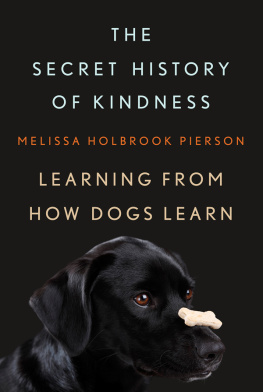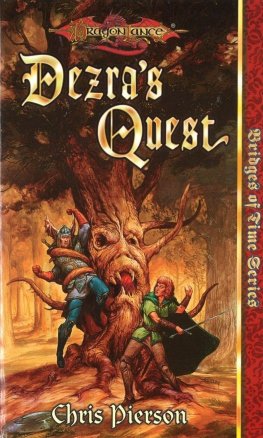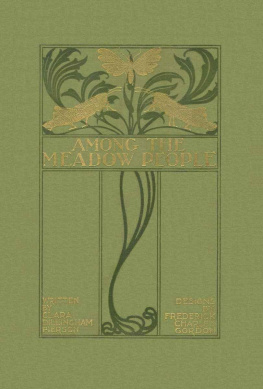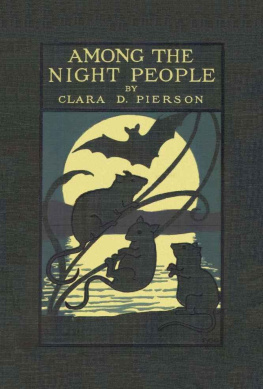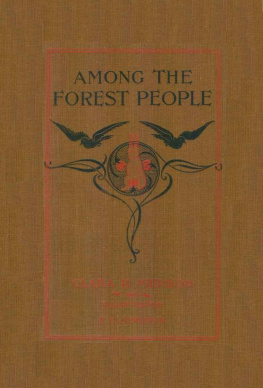
ALSO BY MELISSA HOLBROOK PIERSON
The Man Who Would Stop at Nothing:
Long-Distance Motorcyclings Endless Road
The Place You Love Is Gone: Progress Hits Home
Dark Horses and Black Beauties: Animals, Women, a Passion
The Perfect Vehicle: What It Is About Motorcycles
THE
SECRET HISTORY
OF KINDNESS

LEARNING FROM HOW
DOGS LEARN
Melissa Holbrook Pierson

To Amy Cherry,
dauntless editor and patient friend
If there is anyone that holds that the study of the animal is an unworthy pursuit, he ought to go further and hold the same opinion about the study of himself.
ARISTOTLE
He began to train Piggy-Beast to do all kinds of tricks that no one would have believed an ordinary Sm land pig could possibly do. It was all very secret and Piggy-Beast enjoyed himself and learned very quickly, especially because every time he did something well he got a tidbit from Emil.
ASTRID LINDGREN, EMIL AND PIGGY BEAST , 1973
THE SECRET HISTORY
OF KINDNESS
INTRODUCTION

It is wrong, always, everywhere, and for anyone,
to believe anything upon insufficient evidence.
W. K. CLIFFORD, THE ETHICS OF BELIEF , 1877
Facts do not cease to exist because they are ignored.
ALDOUS HUXLEY, PROPER STUDIES, 1927
O ne rarely thinks of rats as heroes. Maybe it takes a young Belgian Buddhist monk to think they are, and moreover to make them so.
In 1995, Bart Weetjens was pondering a great worldwide problem. Landmines have been deployed in every major conflict since 1938. The earth is littered with them. The World Health Organization says that since the 1960s as many as 110 million mines have been spread throughout the world into an estimated 70 countries. Unexploded ordnance and mines have been responsible for death or injury to estimated hundreds of thousands of people, many of them children. Weetjens desperately wanted to help. Demining was both expensive and dangerouspeople often tripped mines before locating them for disposal.
This is when Weetjens coincidentally learned that researchers had successfully trained gerbils for scent detection work. An idea was born: He happened to own pet rats. What better animal for this task than one light enough to avoid activating the explosive devicesas well as preeminently suited to scent detection because it has more genetic material devoted to olfaction than any other mammal?
The African giant pouched was determined to be the type of rat best suited for the work to be undertaken in Africa. The Belgian government provided a grant for the feasibility study, but since pouched rats initially proved a little hard to breedit would ultimately take a year before they got the recipe rightthe lead biologist of Weetjenss nonprofit, named APOPO, ran experiments to see if Norwegian hooded lab rats could be trained to detect and dispose of TNT-scented objects. They could. Easily.
In 2000 the operation was moved to a large training minefield in Tanzania, where now the pouched rats (the size of chihuahuas and leashed to harnesses that might be a perfect fit for the diminutive dogs) were enrolled in the training. In a startlingly simple procedure, they were first classically conditioned to associate the sound of a click with an imminent reward: click, heres some food; click, food; click, food. The click itself, which would normally be meh to a rat, became exciting after being paired with the truly exciting primary reinforcer that is food: in a bit of transferred magic, the click soon functioned as a reward itself despite having no rewarding qualities of its own. Next the animal was trained to point on the target scent (or rather, to hold his nose in the designated hole for five seconds, an unnaturally long time for a rat). He received a double reward for that: a click, and then the food. Very quickly, his pointing behavior was thereby strengthened, that is, more likely to be repeated. In fact, guaranteed, inasmuch as anything in this world is guaranteed. As if he were complying with some sort of law.
In truth, he was. A universal natural law like that of thermodynamics, or Keplers laws of planetary motion.
In the first live field test, held in Mozambique in 2003, the rats performed flawlessly, locating every buried mine. The next year, the first group of mine detection rats passed the International Mine Action Standards licensing test and the program was granted operational accreditation. More than a year before its deadline of March 2014, APOPO exploded the last three landmines in the Gaza Province of Mozambique. It had cleared more than 6 million square meters by uncovering 2,406 landmines, 13,025 small arms and ammunition, and 922 UXOs. The organization next began work in Thailand, upon that countrys request.
Weetjens and his rats were not satisfied to stop at demining. Exploiting the same native abilities of the rat for scent searcheasily channeled to human use by way of that natural teaching technology known as positive reinforcementhis organization put another third-world scourge between the crosshairs.
Tuberculosis is a massive problem in Africa. Conventional diagnosis is done with microscopes, with a reliability rate of 40 to 60 percent. But once they had been trained to detect the peculiar odor given off by Mycobacterium tuberculosis, rats were able to increase the rate to 89 percent, and at a speed far beyond the abilities of the human eye: it takes them two-hundredths of a second to identify the presence of the bacterium. Rats can accomplish in seven minutes what takes an entire day for a human technician with a microscope. In two years, by mid-2009, APOPOs TB detection rats had evaluated more than 50,000 sputum samples, identifying over a thousand TB infections that would have been missed by conventional microscopy.
* * *
IT IS hard for most of us to imagine a person for whom coming to sit in a chair upon request represents a triumphal entry into a world of new possibilities, of a fuller life than previously available.
Simple is a relative concept. Throwing a ball is simplefor an animal with opposable thumbs. Knowing you shouldnt eat out of the garbage can is simpleunless you are a dog. Obeying a request to behave in a socially acceptable manner is simpleexcept when a neurological defect makes it impossible to comprehend the notion of social acceptability.
Operant conditioning, the manner in which learned behavior is acquired, is a form of semantics: a way to make the incomprehensible understandable for the individual, by transferring the universal motivation of self-interest to anything that does not already contain it. It gives to any act the reason why. Which is not otherwise simple.
And then one cold morning, it happened, entirely out of the blue. Come sit, I said, standing by the chair. The child looked at me calmly, walked quietly to the chair and sat (actually looking quite pleased). Ah! I cannot express the joy of this moment. Balloons! Bubbles! Aeroplanes! We twirled through the air together, and the parents, who were watching, were thrilled. We thought our child would never do that, one of them said. But they did do it, and it was the carefully built scaffolding of operant conditioning that made it possible.
It seems such a simple thingcome and sit in this chairbut it is not . It is terribly important that one does learn to do it, because being able to sit in a chair (when asked) is a gateway to a host of different experiences in our culture, with mainstream schooling being only one of them. In the days following this event, the parents told me that many things were changed by itthe childs toilet times and dinner times, car rides, and so on. And then of course the program itselfwith the ability to sit at the table for longer and longer periods (and therefore also concentrate for longer periods), the child made the most extraordinary progress. It was amazing to witness.
Next page
